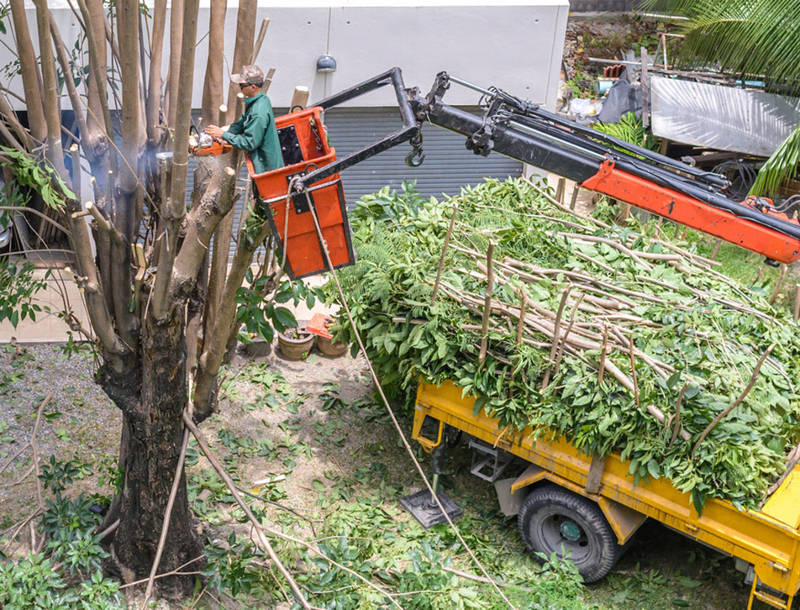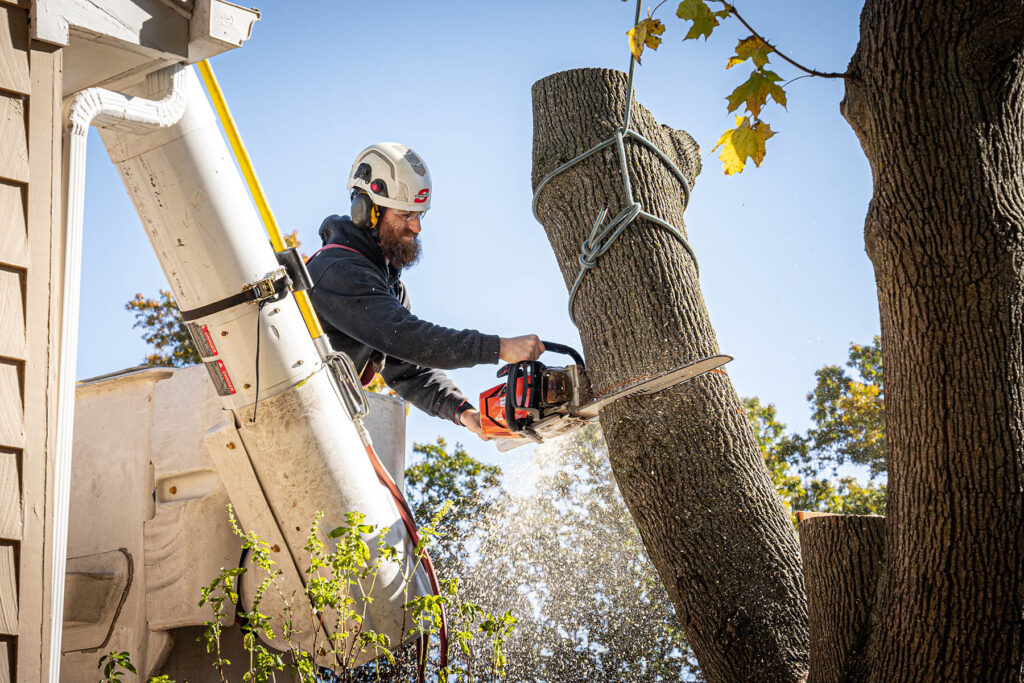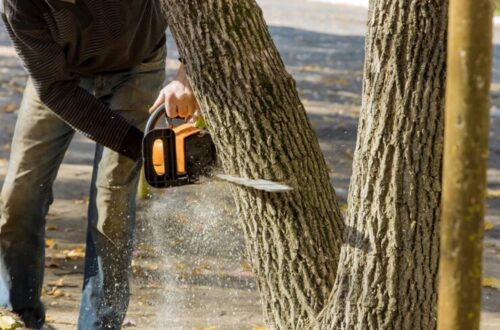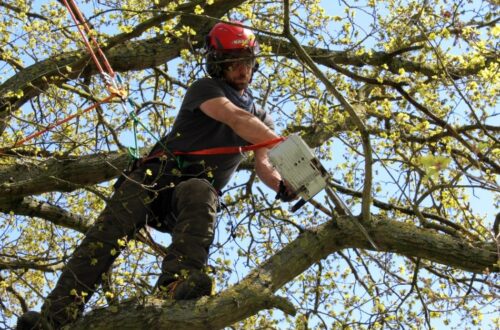In the Hills District, tree removal is often undertaken for two primary reasons: safety and aesthetics. Balancing the natural beauty of trees with the potential risks they pose is essential for creating a safe and visually appealing environment. This article will explore the importance of tree removal in achieving this balance and enhancing the overall safety and aesthetic value of the Hills District.
Understanding the Importance of Tree Removal
When it comes to managing trees in urban areas, safety should always be a top priority. Overgrown or unhealthy trees can pose significant risks to both people and property. By removing trees that are at risk of falling or are diseased, we can minimize potential accidents and injuries. Additionally, tree removal plays a crucial role in maintaining the aesthetics of the area, ensuring that landscapes are visually appealing and well-maintained.
Tree removal hills district is not a decision taken lightly, as it involves careful consideration of various factors such as tree species, health condition, and location. Certified arborists are often consulted to assess the trees and determine the best course of action. Through their expertise, they can identify potential risks and recommend appropriate measures to mitigate them, ensuring the safety of the surrounding environment.
Balancing Nature with Safety
While trees provide numerous benefits to the environment, such as absorbing carbon dioxide and providing shade, they can also become potential hazards if not properly maintained. Overgrown trees with weak branches or roots can pose a threat during storms or high winds. By regularly assessing and removing trees that pose a risk, we can strike a balance between preserving the natural beauty of the Hills District and ensuring the safety of its residents.
Furthermore, tree removal is often accompanied by replanting initiatives to maintain the ecological balance of the area. New trees are carefully selected to complement the existing flora and fauna, creating a harmonious environment that supports biodiversity and sustainability. This approach not only enhances the visual appeal of the region but also contributes to the long-term health of the ecosystem.
Enhancing Aesthetics through Tree Removal
Tree removal can dramatically improve the aesthetic appeal of an area by eliminating overcrowding and allowing other plants and shrubs to thrive. Overgrown trees can block views, obscure architectural features, and create a sense of visual clutter. By strategically removing trees, we can enhance the beauty of properties and maximize their overall value.
Moreover, tree removal opens up opportunities for landscaping enhancements and design modifications. By carefully planning the removal process, property owners can create new outdoor spaces, introduce decorative elements, and improve the overall functionality of their landscapes. This transformation not only revitalizes the visual appeal of the area but also adds a touch of creativity and individuality to the surroundings.
The Safety Risks of Unmanaged Trees
Unchecked tree growth can result in a range of safety hazards that can impact both residential and commercial properties. It is crucial to address these risks proactively to ensure the well-being of individuals and the preservation of the Hills District’s infrastructure.
When trees are left unmanaged, they can not only pose a threat to physical structures but also to the overall aesthetic appeal of the area. Overgrown trees may obstruct views, create dark and unsafe areas, and even reduce property values. By taking a proactive approach to tree management, we can maintain a balance between the beauty of nature and the safety of our community.
Potential Hazards of Overgrown Trees
Overgrown trees can pose a threat to buildings, power lines, and other structures. The weight of large branches or the entire tree itself can cause severe damage if they were to fall. By identifying and removing trees at risk of falling, we can minimize the potential for property damage and personal injury.
In addition to the physical dangers posed by overgrown trees, there are also environmental implications to consider. Trees that are left unmanaged can disrupt the local ecosystem, impacting wildlife habitats and biodiversity. By maintaining a balance between tree growth and human safety, we can create a harmonious environment where both nature and civilization can thrive.

Disease and Pest Control: A Safety Perspective
Unmanaged trees can become susceptible to diseases and infestations, weakening their structure and making them more prone to breakage. Disease and pest control measures, combined with proper tree removal, can help prevent the spread of infections and ensure the safety and longevity of the remaining trees in the Hills District.
Furthermore, the health of trees is closely linked to the overall well-being of the community. Trees play a crucial role in air purification, temperature regulation, and mental health improvement. By addressing disease and pest issues in a timely manner, we not only protect individual trees but also safeguard the environmental benefits that a thriving tree population provides to the residents of the Hills District.
The Aesthetic Impact of Tree Removal
Improving Landscape Views
Tree removal can significantly improve the overall aesthetics of landscapes by opening up views and creating more spacious surroundings. By removing obstructing trees, we can showcase the natural beauty of the Hills District and create visually appealing spaces that residents and visitors can enjoy.
Furthermore, the removal of trees can also lead to increased sunlight exposure in the area. This not only enhances the visual appeal of the landscape but also promotes the growth of sun-loving plants and flowers, contributing to a more vibrant and diverse ecosystem.
Maximizing Property Value through Tree Management
Well-maintained trees can add value to properties, but unmanaged or poorly maintained trees can have the opposite effect. By removing trees that are diseased, dying, or obstructing the view, property owners can enhance curb appeal, improve marketability, and ultimately increase property value in the Hills District.
In addition to boosting property value, strategic tree removal can also improve safety on the property. Dead or decaying trees pose a risk of falling and causing damage to structures or injury to individuals. By proactively managing tree removal, property owners can mitigate these risks and create a safer environment for themselves and their neighbors.
The Tree Removal Process in Hills District
Evaluating the Need for Tree Removal
Before initiating any tree removal process, it is important to evaluate the necessity of removal. Professional arborists assess the health, structural integrity, and potential risks associated with each tree to determine whether removal is the best course of action. This evaluation ensures that only trees that pose a genuine threat are removed, while those that can be safely maintained are preserved.
Furthermore, the evaluation process also takes into consideration the environmental impact of tree removal. In the Hills District, the lush greenery plays a crucial role in maintaining the ecological balance of the area. Arborists carefully evaluate the ecological significance of each tree, weighing the benefits of preservation against the necessity of removal to maintain the overall health of the ecosystem. Learn more about expert tree removal in hills district
The Role of Professional Arborists
Tree removal is a specialized task that requires expertise and experience. Professional arborists possess the necessary knowledge and equipment to safely and efficiently remove trees, following industry best practices and local regulations. Hiring a qualified arborist ensures that the tree removal process is carried out in a manner that prioritizes safety and the preservation of the Hills District’s beauty.
Moreover, professional arborists in the Hills District not only focus on tree removal but also emphasize tree care and maintenance. They provide valuable insights on tree health, pruning techniques, and disease prevention to ensure the longevity of the remaining trees in the area. By promoting proactive tree care, arborists contribute to the overall well-being of the urban forest in the Hills District, enhancing its resilience against environmental challenges.

Legal Considerations for Tree Removal in Hills District
Understanding Local Tree Removal Regulations
Before proceeding with any tree removal, it is essential to understand and comply with local tree removal regulations. The Hills District may have specific guidelines and permits in place to protect the natural environment and ensure responsible tree management. By familiarizing oneself with these regulations, property owners can carry out tree removal activities in a legal and environmentally conscious manner.
It is crucial to recognize that trees play a vital role in maintaining ecological balance and enhancing the overall quality of life in the Hills District. Beyond their aesthetic value, trees provide oxygen, shade, and habitat for various wildlife species. Therefore, before deciding to remove a tree, it is essential to consider its ecological impact and explore alternative solutions such as pruning or transplanting.
Securing Necessary Permits and Approvals
Depending on the tree species, size, and location, tree removal in the Hills District may require permits and approvals from local authorities or homeowner associations. Obtaining the necessary paperwork ensures that the removal process is conducted within the framework of legal requirements, safeguarding the interests of both individuals and the community at large.
Furthermore, it is advisable to consult with certified arborists or tree care professionals before initiating any tree removal project. These experts can provide valuable insights into the health of the tree, potential risks associated with its removal, and alternative solutions that may be more environmentally sustainable. Their expertise can help property owners make informed decisions that align with both regulatory requirements and best practices in arboriculture.






